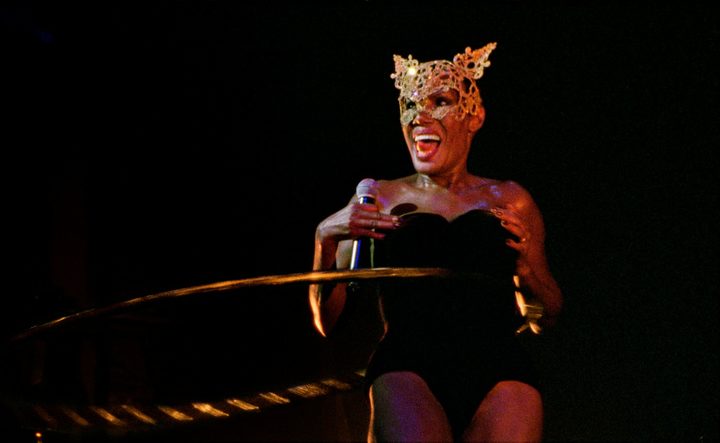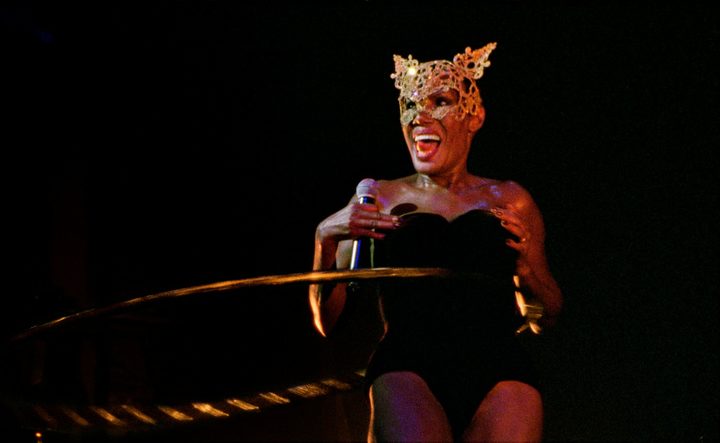“If the lights should go out, if the sound fails, I can still hold the audience. In the dark, without any trimmings. It’s a lonely place, but it’s a fascinating lonely place.” – Grace Jones
Jones is in her sixties and she can’t understand why everyone nowadays goes to bed so early. Party-goers in New York leaving an affair at 10:30? “They must be depressed.” Paris has turned into a quiet little town? “It’s terrible.” In GRACE JONES – BLOODLIGHT AND BAMI – directed by Sophie Fiennes and shot over several years around the world – she tells a young record spinner, “You’re a DJ, you don’t need sleep.”
Grace still lifts weights, drinks Champagne with breakfast if she feels like it, argues with recalcitrant producers and inept managers, keeps up with her family in Jamaica, and stops shows with “Pull Up to the Bumper” and “Love is the Drug.” (Stage design by the late Eiko Ishioka.) Expertly applying her own maquillage – a Richard Bernstein illustration come to life – and paying her own recording costs from the money she makes at gigs (“I hope the set isn’t too tacky…”), Grace has outlived, outworked, out-parlayed them all. Fiennes documentary – blissfully free of identifying titles and explanatory “wall cards” – is as liberated and liberating as its subject.
GRACE JONES – BLOODLIGHT AND BAMI, now playing.
NUART THEATRE, through Thursday, April 26.
landmarktheatres.com/nuart-grace-jones
Opens Friday, April 27:
LAEMMLE PLAYHOUSE, 673 East Colorado Boulevard, Pasadena.
Top and below: Grace Jones in Grace Jones: Bloodlight and Bami. Image credit: Kino Lorber.
Middle: Illustration by Richard Bernstein, October 1984. Image credit: Interview magazine.





